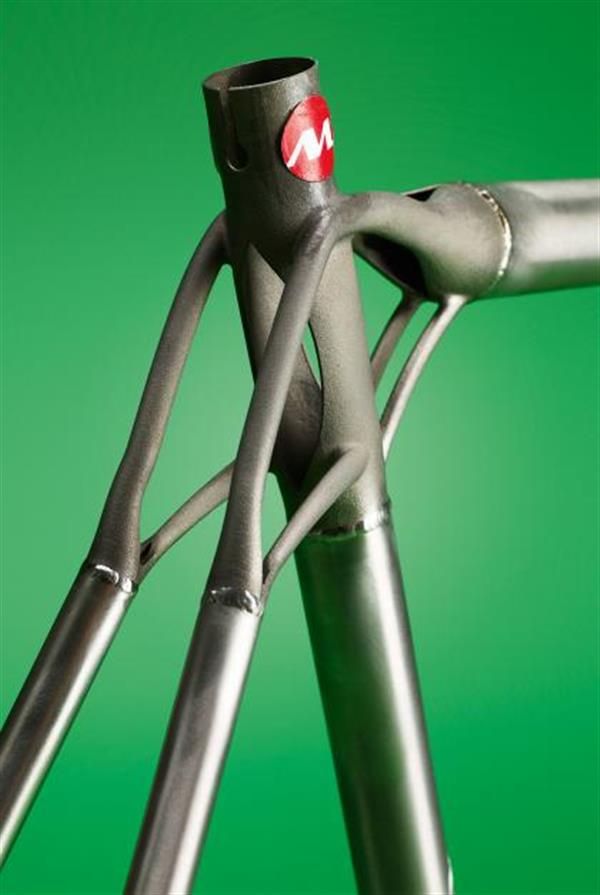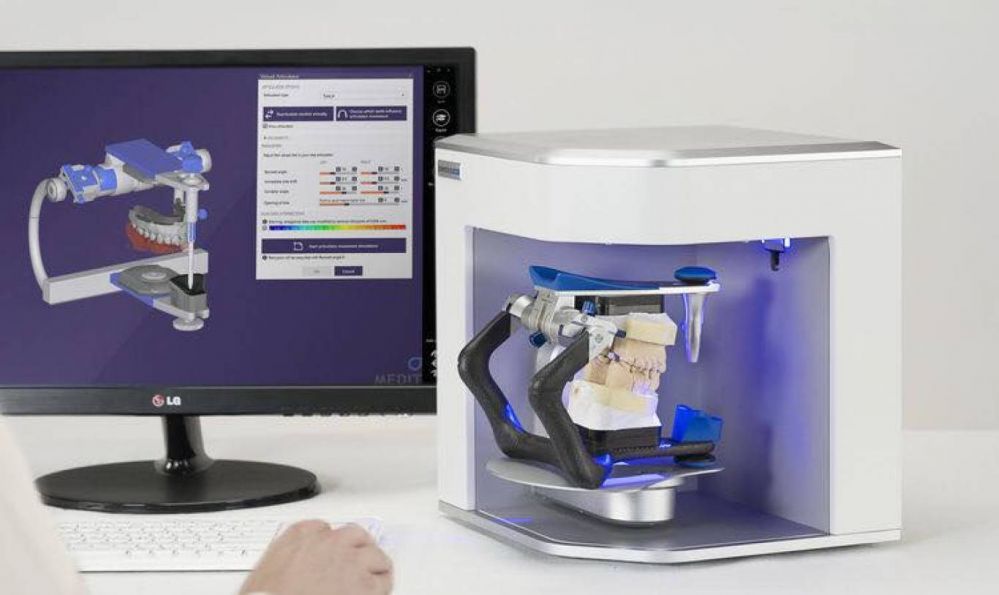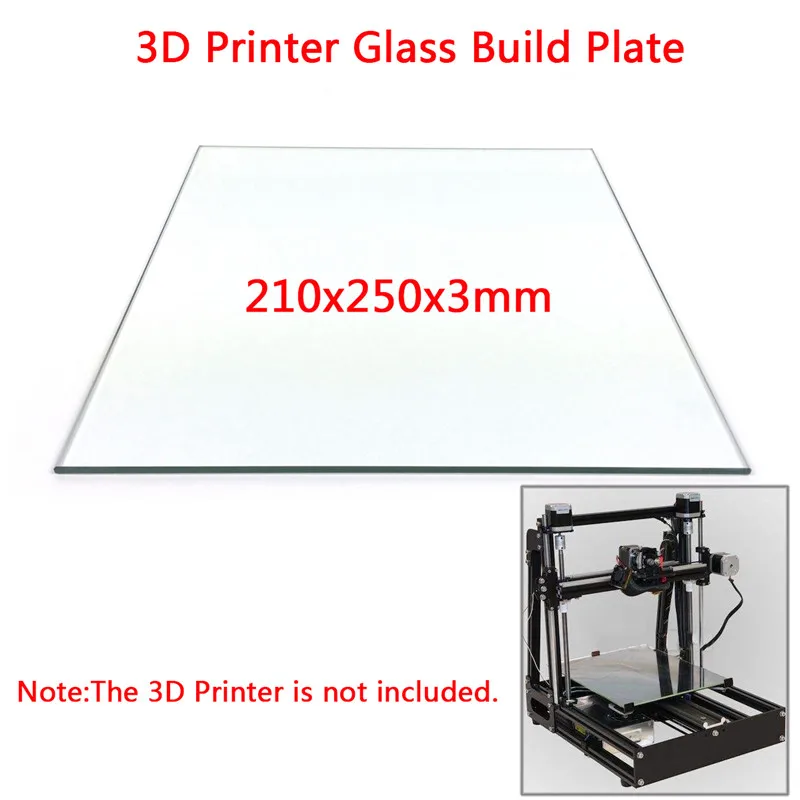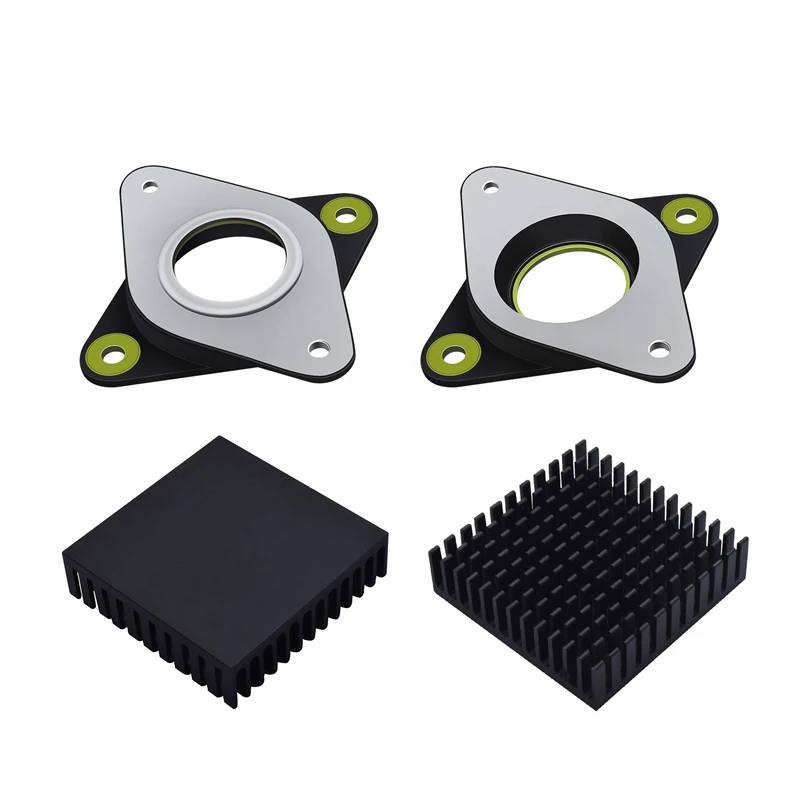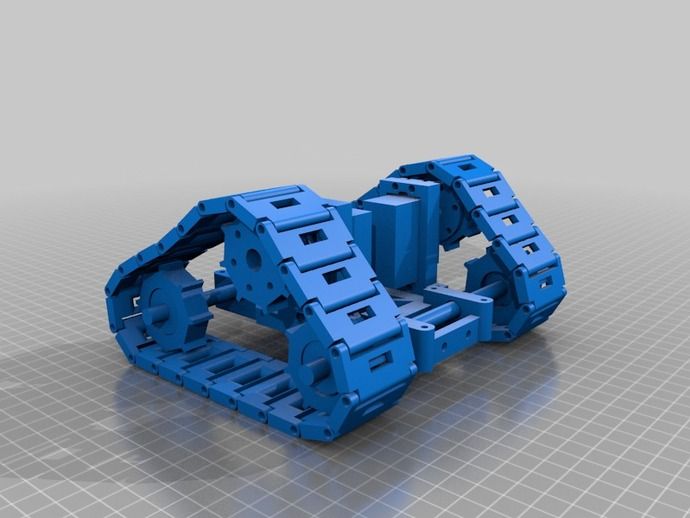3D printing bike frame
Canyon unveils sustainable concept 3D printed mountain bike prototype
0Shares
Bicycle manufacturer Canyon has debuted a concept 3D printed mountain bike prototype which aims to demonstrate a more sustainable method of bicycle production.
Working with software and 3D printing service provider Materialise, Canyon 3D printed the bike’s frame and fork as part of Bike Magazine Germany’s ‘Ride Green’ campaign. The finished bike was showcased at the recent Cycle Show in London.
The Ride Green bike
The aim of the Ride Green project was to design a bike that is as sustainable as possible, with all its components being fully recyclable. The materials used also needed to be reusable without compromising the quality of the parts produced, while reducing waste was another key goal of the project.
Canyon was tasked with building the bike’s cradle-to-cradle frame and fork, and settled on 3D printing as the most suitable, and sustainable, method of production. The firm enlisted Materialise’s selective laser melting (SLM) 3D printing technology to fabricate the components in order to achieve the frame’s desired unique shape.
Materialise is no stranger to the bicycle sector, having deployed its technology to print 2,000 parts for fellow bicycle manufacturer Pinarello’s Dogma F racing bike last year. In addition to achieving substantial weight reductions for a crucial seat clamp component for the bike, the company also created a full-service, customized production workflow for the project.
Canyon’s 3D printed bike frame. Photo via Bike Magazine.In order to meet the sustainability requirements of the project, the frame and fork were 3D printed from recycled aluminum powder. Canyon also wished to reduce the overall amount of raw material used in the fabrication of the frame, not only to improve the bike’s environmental impact but also to lower the frame weight and provide performance benefits.
Canyon also wished to reduce the overall amount of raw material used in the fabrication of the frame, not only to improve the bike’s environmental impact but also to lower the frame weight and provide performance benefits.
The frame is comprised of a skeleton that forms its structure, which is enclosed within an outer shell to provide additional protection and more desirable surface properties.
The frame was 3D printed in three pieces, each taking around six hours to produce. Once printed, the frame and fork weighed just 2 kilograms. While Canyon says there are currently no plans for the bike to enter production, the project could potentially influence how the company’s future models are designed and manufactured.
The bicycle frame was 3D printed in three parts and glued together. Photo via Bike Magazine.Boosting cycling performance with AM
Given 3D printing’s ability to consolidate multiple parts into single lightweight components and produce components with previously unachievable geometries, the technology’s benefits have been increasingly realized by bicycle manufacturers in recent years.
For instance, custom bicycle producer Sturdy Cycles has switched the production of its titanium bicycle parts to Headmade Materials’ Cold Metal Fusion (CMF) technology, and has previously worked with RAM3D to print parts for its road bikes. British Cycling even enlisted Renishaw’s help to 3D print aluminum and titanium parts for its new track bike on show at the Tokyo 2022 Olympic Games.
Meanwhile, some 3D printing firms have taken to kickstarter to launch their 3D printed bicycle components, such as Headmade Materials and Element22 who launched their jointly-developed novel Titanum 3D printed bike pedal design on the platform last year.
Elsewhere, the likes of Fizik and Specialized have used Carbon’s DLS 3D printing technology to improve the weight and comfort of their saddles, while Stratasys’ h450 machine has been used by DQBD to produce fully personalized 3D printed saddles that offer increased performance efficiency.
The Argo Adaptive short-nosed saddle’s 3D printed lattice. Photo via Fizik.
Photo via Fizik.Subscribe to the 3D Printing Industry newsletter for the latest news in additive manufacturing. You can also stay connected by following us on Twitter and liking us on Facebook.
Looking for a career in additive manufacturing? Visit 3D Printing Jobs for a selection of roles in the industry.
Subscribe to our YouTube channel for the latest 3D printing video shorts, reviews, and webinar replays.
Featured image shows Canyon’s 3D printed bike frame. Photo via Bike Magazine.
Tags British Cycling Canyon Carbon Cycle show 2022 Element22 fizik Headmade Materials Materialise Pinarello RAM3D Renishaw Ride Green campaign Specialized Stratasys Sturdy Cycles
Hayley Everett
Hayley is a Technology Journalist for 3DPI and has a background in B2B publications spanning manufacturing, tools and cycling. Writing news and features, she holds a keen interest in emerging technologies which are impacting the world we live in.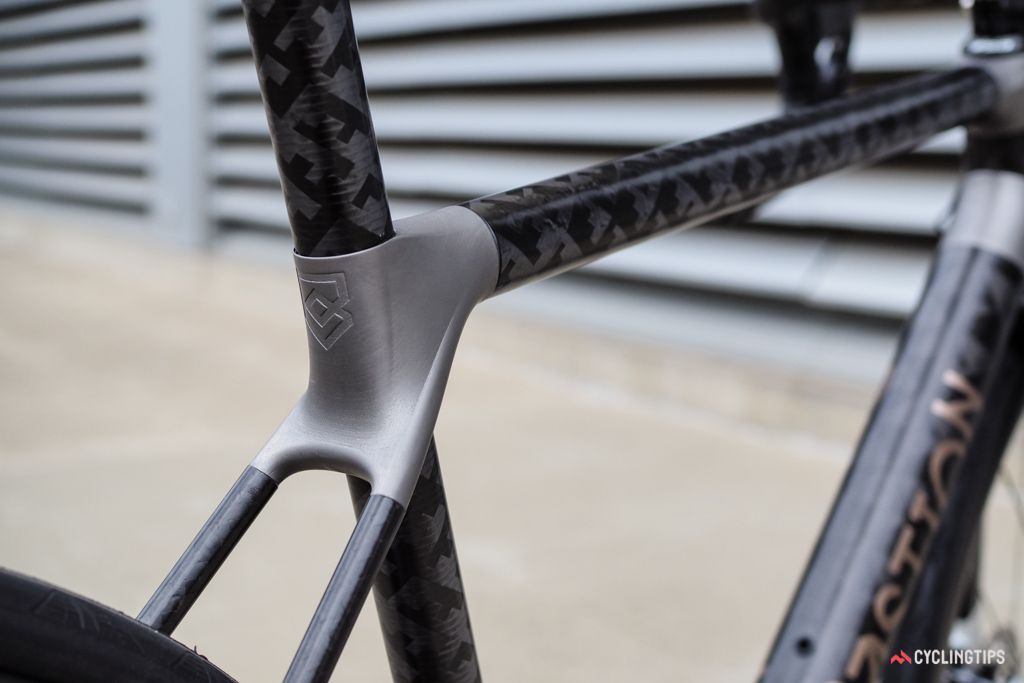
The Top Bicycles Made With 3D Printing
Published on September 22, 2020 by Aysha M.
As you know, additive manufacturing is starting to play an important role in the world of sports, where it allows to design custom-made equipment, more adapted to the morphology of each athlete: while focusing on increasing comfort, it also offers better performance. Cycling is undoubtedly one of the sports where 3D technologies are most widely used. The goal is to imagine a bike that is lighter, faster, more comfortable, while reducing manufacturing time and costs. At the moment, there is no such thing as a bike 3D printed in its entirety – it’s more a matter of certain components, such as the saddle, frame, pedals, etc. So today, we present 12 bikes that have been made using 3D printing, be it commercialized products available on the market or just unique projects that demonstrate the advantages of the technology. The bikes are listed in alphabetical order.
The Bikes Available on the Market
Bike frame by Arevo
A startup from Silicon Valley, Arevo, has developed a six-axis robotic 3D printing platform capable of designing composite parts.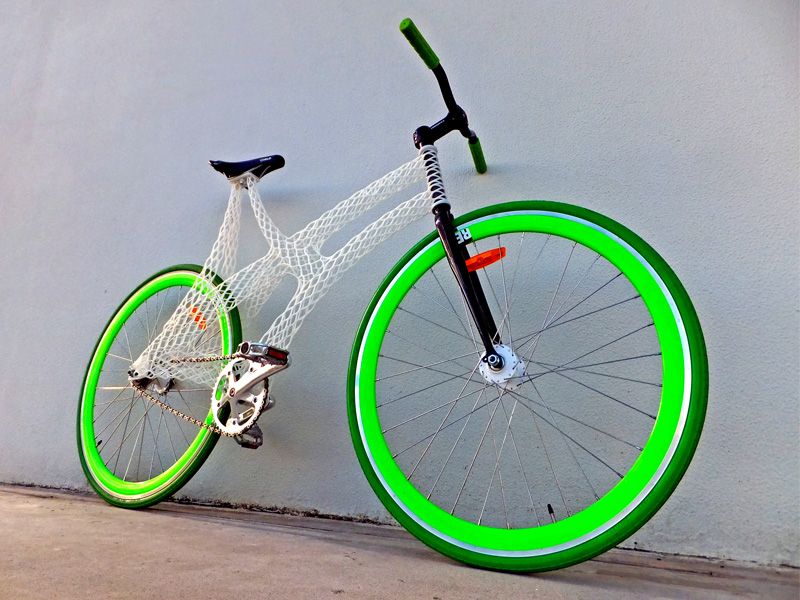 In order to demonstrate the advantages of its solution, it has imagined a 3D printed frame from carbon fibers. The part was produced in a single run and took only a few days to manufacture – the process normally takes 18 months from design to production. In particular, Arevo worked with Emery Bikes to create Emery One, the first electric bicycle with a 3D printed carbon fiber frame.
In order to demonstrate the advantages of its solution, it has imagined a 3D printed frame from carbon fibers. The part was produced in a single run and took only a few days to manufacture – the process normally takes 18 months from design to production. In particular, Arevo worked with Emery Bikes to create Emery One, the first electric bicycle with a 3D printed carbon fiber frame.
Atherton Bikes
Specializing in mountain bike production, Atherton worked with UK metal 3D printer manufacturer Renishaw to produce the titanium sleeves for its bike frames. These are connectors that connect the cylindrical tubes that form the frame of the two-wheeler. They were printed on the RenAM 500Q machine with four lasers. This saves Atherton time, but also allows the company to change the sleeve design if necessary – simply by modifying the CAD file and testing different designs.
Empire Cycles & Renishaw: 3D printed bike frame
Empire Cycles is a bike designing and manufacturing company from the North-West of England that offers innovative designs to mountain bikers and downhillers.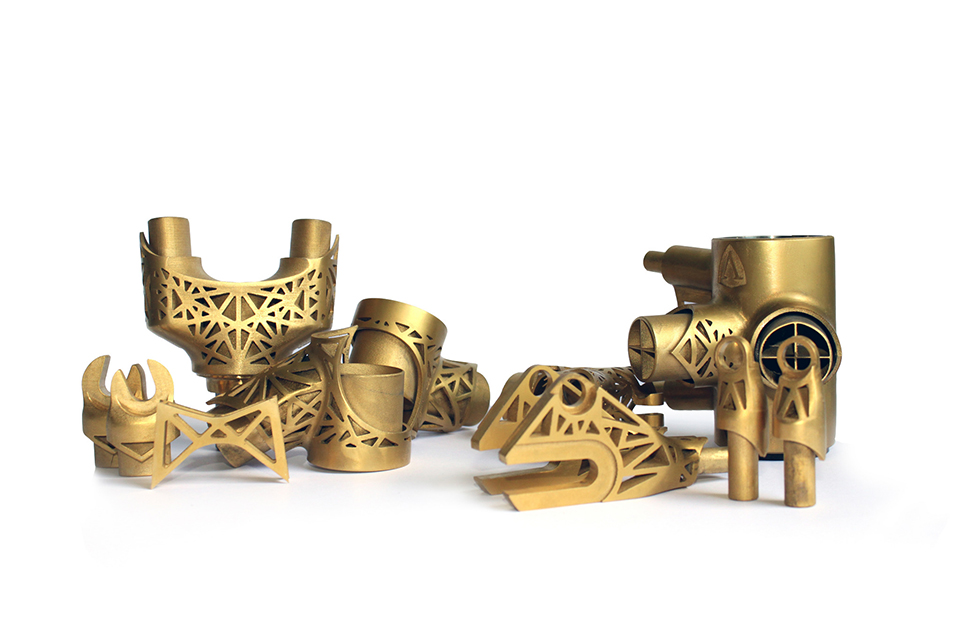 Working with UK metal AM manufacturer Renishaw, it optimized the design of its mountain bike using additive manufacturing technologies. By using topology optimization software, Renishaw was able to determine the most efficient place for material, removing it from areas of low stress until a design optimized for load bearing was generated. Therefore, the mountain bike frame’s weight was reduced by 33%. The resulting mountain bike is lighter yet stronger, showcasing a 3D printed titanium alloy frame and seat post bracket. The frame was additively manufactured in sections using Renishaw’s AM250 machine.
Working with UK metal AM manufacturer Renishaw, it optimized the design of its mountain bike using additive manufacturing technologies. By using topology optimization software, Renishaw was able to determine the most efficient place for material, removing it from areas of low stress until a design optimized for load bearing was generated. Therefore, the mountain bike frame’s weight was reduced by 33%. The resulting mountain bike is lighter yet stronger, showcasing a 3D printed titanium alloy frame and seat post bracket. The frame was additively manufactured in sections using Renishaw’s AM250 machine.
Specialized 3D printed bike saddles
Specialized Bicycles, based in the US, manufactures fitness, mountain and road bikes. In a recent collaboration with 3D printer manufacturer Carbon, the company redesigned the saddle, which it considers one of the most important parts of a bike’s body. The challenge when it comes to the saddle is designing a part that can maximize rider performance while providing comfort and stability.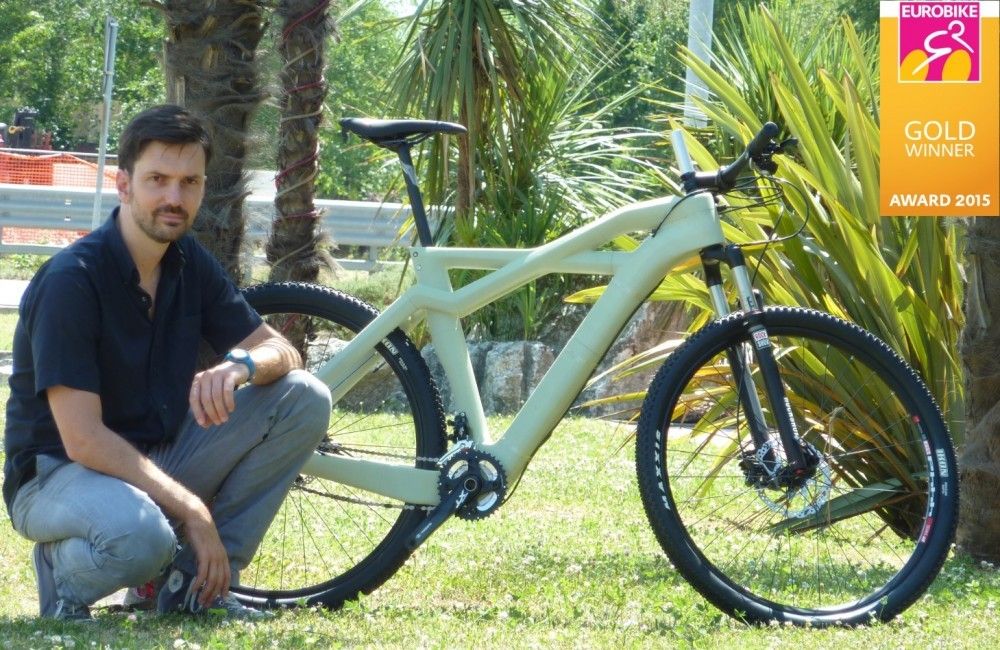 Using Carbon’s technology, the company replaced the traditional foam saddle with an intricate elastomeric lattice structure that overcomes the limits of foam. Therefore the new design, in hand with the Carbon Digital Light Synthesis technology – which relies on a process of photopolymerization – allows riders to rebound quickly, disperse pressure and improve breathability.
Using Carbon’s technology, the company replaced the traditional foam saddle with an intricate elastomeric lattice structure that overcomes the limits of foam. Therefore the new design, in hand with the Carbon Digital Light Synthesis technology – which relies on a process of photopolymerization – allows riders to rebound quickly, disperse pressure and improve breathability.
Superstrata
Superstrata partnered with Arevo to design its 3D printed unibody bicycle, which the two companies jointly unveiled this summer. Typically, 3D printed bike frames consisted of several elements that are glued and welded together. The biggest disadvantage of that conventional manufacturing technique is that such frames can quite easily fall apart under pressure. Therefore, Superstrata decided to additively manufacture unibody bikes, using continuous carbon fiber technology. By using carbon fiber reinforced thermoplastics, Superstrata managed to achieve high impact-resistance and light weight – according to the company, one bike weighs less than 2 water bottles or 1,3 kg! Since Directed Energy Deposition (DED) 3D printing technology enables a perfect customization, each frame can be custom produced to fit the individual’s body type.
Urwahn Bikes
The German bike manufacturer, Urwahn Bikes partnered with Schmolke Carbon, specialized in the fabrication of carbon fiber bike parts, to develop a 3D printed frame for its racing bike. The first thing you notice on this bike is the copper plating on the 3D printed steel frame. Besides its shiny exterior, this racing bike has a geometric advantage over other bikes: the elastic suspension of the rear wheel gives the rider additional riding comfort without sacrificing bottom bracket stiffness. This effect is especially noticeable on longer rides and uneven surfaces.
Volkswagen x Kinazo electric bike
The Slovak company Kinazo worked with the automotive manufacturer Volkswagen to design its 3D printed electric bike, the Kinazo e1, which was first released in 2017. Kinazo aimed to create an electric bike with an integrated battery in the frame and its own system of controlling the electronics through a mobile application. They also wanted it to be customizable.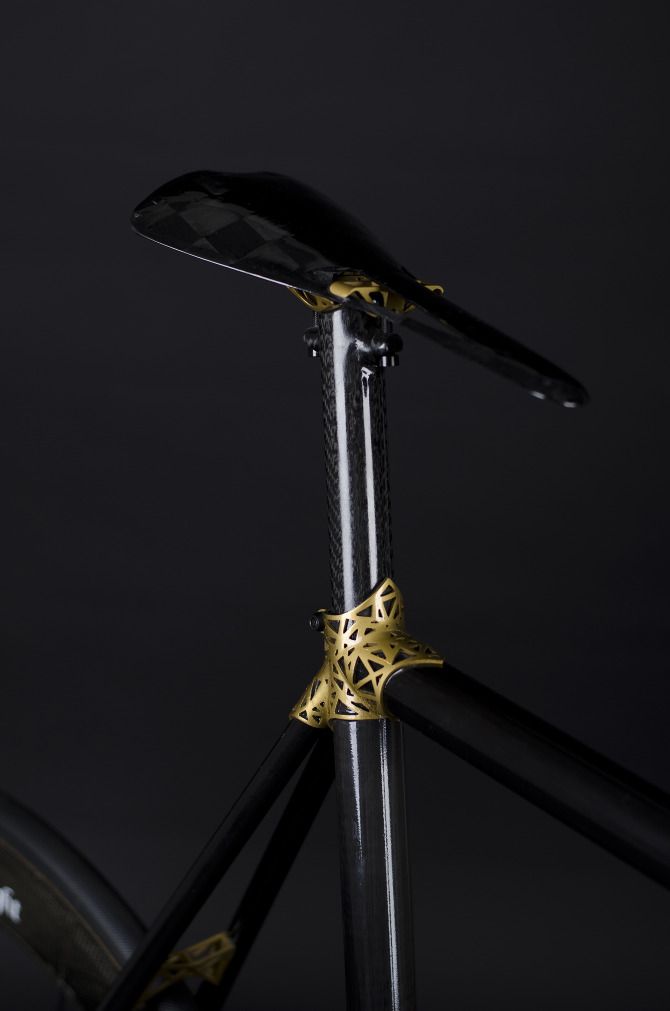 3D printing was a perfect solution, as it would allow not only customization but also for the frame to be produced in one piece! Therefore, Kinazo turned to Volkswagen, which, at the time, had one of the largest metal 3D printers in the world: a Concept Laser X LINE 2000R. With a build area of 800 x 400 x 500 mm, the machine was big enough to 3D print the bike’s frame. The bike was prototyped in aluminum and weighed about 20 kilograms.
3D printing was a perfect solution, as it would allow not only customization but also for the frame to be produced in one piece! Therefore, Kinazo turned to Volkswagen, which, at the time, had one of the largest metal 3D printers in the world: a Concept Laser X LINE 2000R. With a build area of 800 x 400 x 500 mm, the machine was big enough to 3D print the bike’s frame. The bike was prototyped in aluminum and weighed about 20 kilograms.
WX-R Vorteq
The British company Vorteq developed the WX-R track bike in collaboration with engineers from the bike manufacturer Worx. The aim of the project was to overcome air resistance. For the realization of the bike, they used the portable 3D scanning technology, Artec Leo, a CFD analysis and a CAD program. This enabled them to develop a high-performance carbon fiber bike that has already won two medals, three personal records, two national records and a new Asian record at the UCI Track World Championships in early 2020. In the future, the WX-R track bike will be used in sprint events at the Olympic Games!
The 3D printed bike projects
3D printed Arc Bike II
The Amsterdam-based company MX3D, which specializes in RAM (Robotic Additive Manufacturing) technology, has developed its own bike called the Arc Bike II.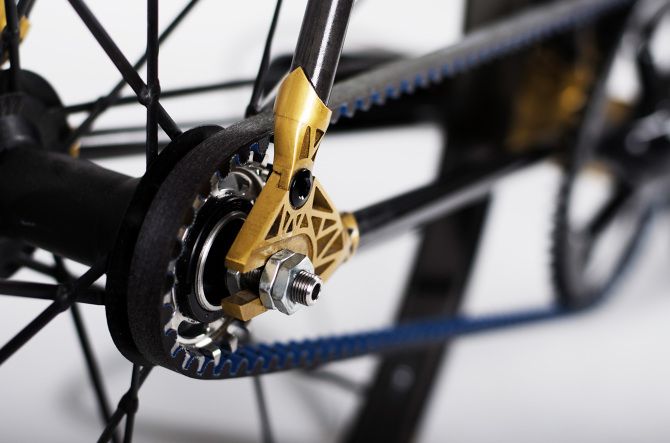 It was 3D printed in 24 hours using WAAM (Wire Arc Additive Manufacturing) technology. Unlike its predecessor, which was made of stainless steel, this one is much lighter because it is made of aluminum. It should also be easier to customize since the design of the bike can be adapted to the proportions of the cyclist’s body using generative design software. The bike is not intended to be commercially available, but is currently being used as a demonstrator of the benefits of WAAM technology.
It was 3D printed in 24 hours using WAAM (Wire Arc Additive Manufacturing) technology. Unlike its predecessor, which was made of stainless steel, this one is much lighter because it is made of aluminum. It should also be easier to customize since the design of the bike can be adapted to the proportions of the cyclist’s body using generative design software. The bike is not intended to be commercially available, but is currently being used as a demonstrator of the benefits of WAAM technology.
BMW Balance Bike
A balance bicycle is a bike without pedals, chains or gears that helps children learn balance and steering. Dutch designer Roel van Heur has designed a model inspired by a BMW luxury motorcycle. The frame and forks of the Balance Bike were made of stainless steel, cut and welded into shape, and then hand brushed for an authentic finish. The Balance Bike also contains 3D printed parts, such as the fake fuel tank and fork sleeves. This small 3D printed bike is a personal project and shows the capabilities of 3D printing.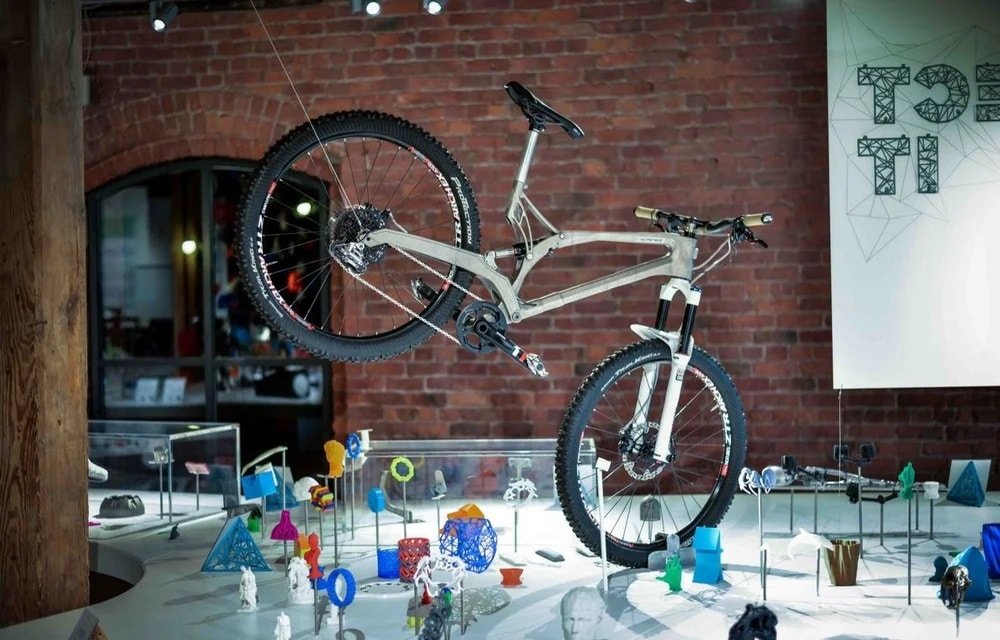
Freicycle
Developed by Dr. Dennis Freiburg, the Freicycle broke the Guinness record for the world’s lightest electric bicycle in 2019. Weighing less than 7 kg, this bicycle features 3D printed parts, which helped to significantly reduced the final weight. The German mechanical engineer started with a model whose chassis weighed less than 1 kg and whose brakes were mounted on the rim. Pedals and brake calipers were an example of lightweight parts that could be integrated through additive manufacturing. The engine part often adds a lot of weight to a bike, so Dennis converted the main engine to a friction motor supported by the rear wheel. Being able to reach a speed of 48 km/h, the Freicycle is certainly an incredibly efficient solution.
3D printed bike by Sculpteo
Sculpteo has once again proven that it is capable of providing solutions to all obstacles that may arise by optimizing manufacturing processes. This time, they proposed one of the most visionary and original products: the first 3D printed bicycle that moves thanks to digital functions.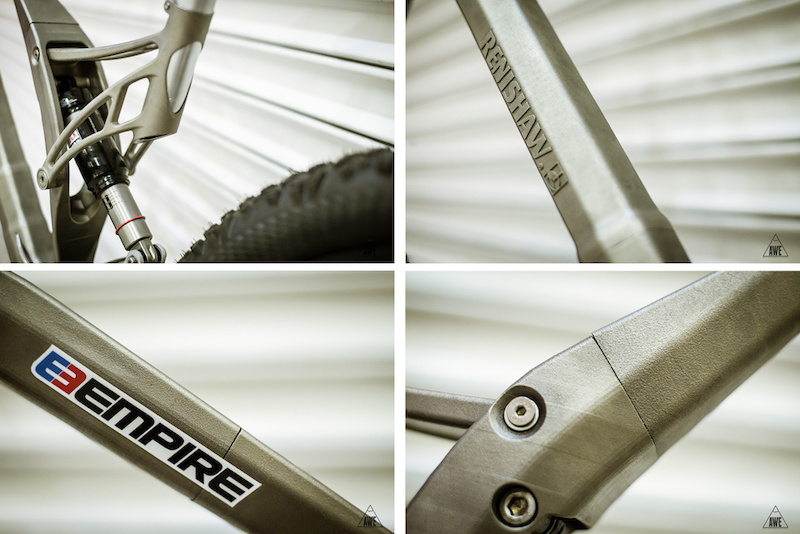 Sculpteo’s engineers and managers took this bike on a trip from Las Vegas to San Francisco. The goal? To demonstrate the strength of the product as well as the advantages of the technology used. Their Agile Metal Technology was a key point of the project. It is a very complete software suite designed to facilitate and accelerate metal 3D printing projects. It can be considered today as the first 3D printing artificial intelligence application, created to help evaluate and anticipate all the problems that a project like this can encounter during the manufacturing process.
Sculpteo’s engineers and managers took this bike on a trip from Las Vegas to San Francisco. The goal? To demonstrate the strength of the product as well as the advantages of the technology used. Their Agile Metal Technology was a key point of the project. It is a very complete software suite designed to facilitate and accelerate metal 3D printing projects. It can be considered today as the first 3D printing artificial intelligence application, created to help evaluate and anticipate all the problems that a project like this can encounter during the manufacturing process.
What do you think about this ranking of 3D printed bikes? Let us know in a comment down below or on our Facebook and Twitter pages! Don’t forget to sign up for our free weekly Newsletter, with all the latest news in 3D printing delivered straight to your inbox!
🚲 Best Bicycle 3D Printable STL Files・Cults
🚲 Best Bicycle 3D Printable STL Files
Free Download Bicycle Accessories 3D Files
A selection of valve covers, mounts, holders and racks for your bike that you can make with 3D printer.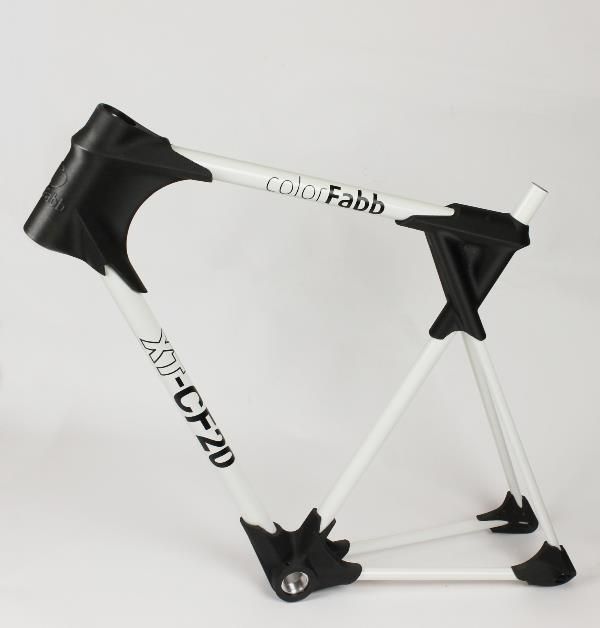 There are so many bike accessories out there and they can be very expensive, 3D printing is a great way to cut costs! 3D printing is also a great solution for inventing ideas that will make everyday life on your bike easier.
There are so many bike accessories out there and they can be very expensive, 3D printing is a great way to cut costs! 3D printing is also a great solution for inventing ideas that will make everyday life on your bike easier.
Popularity Rating
Customizable Bike Mount for Modular Mounting System
Free
3D Printed Bike
Free
Wall Rack
Free
mountain bike wall mount
Free
Bicycle water bottle cage
Free
GoPro bike mount
Free
Stand Phone For Bike
Free
Water Bottle Holder
Free
Stormtrooper Valve Cap
Free
Pizza Valve Cap
Free
Coffee Cup Holder
Free
Brompton logo tap
Free
Presta valve cap with thread _ Presta Cap valve with thread
Free
Smartphone Support Magnetic Bike
0,50 €
GoPro Handlebar Mount (customizable)
Free
MOUSQUETON
Free
bike flashlight mount
Free
SR Suntour fork top cap socket (FAA122 replacement)
Free
bike support go pro diameter 32 mm
Free
Handelbar mount for Samsung S5 with wireless Qi charging - weather proof
Free
Bike Light
Free
Triathlon extension
Free
Smartphone bike holder
Free
Bar-End bike Plugs
Free
Bike FlashLight Quick Release Mount
Free
Saddle mount for "Smart LED / Planet Bike" lights
Free
iPhone 6 Holder
Free
Draisienne bike (IKEA hack collection) by Andreas Bhend and Samuel N.
 Bernier
Bernier Free
bike holder
free
The Bicycle Bubble Machine
Free
iPhone XS/6s Holder for GARMIN Mount (eTrex/Oregon/Colorado Series)
Free
TUTUGO | Coffee Cup Valve Caps
Free
Mud Bike
Free
Pinces pantalon pour le velo - Cycling Trouser Clips
Free
Fizik ICS Integrated Clip System Saddle adapter for Planet Bike / SMART Led Lights
Free
Clamping Knob For M8 Nut
Free
Bead buddy for bicycle tire installation
Free
Deer Bike Rack
Free
iPhone 6 Plus Holder
Free
Bicycle Stand - 2 Part for use on the Road
Free
bike cleaning wheel
Free
Lightweight press-fit MTB handlebar plugs
Free
Graziella Back Light Mount
Free
Yet Another Bicycle Flashlight Holder
Free
Beach umbrella holder for your bike
Free
ISCG bash guard
Free
derSchraederFlatter - Tire deflator for Schraeder valves
Free
Bike Attachment for iPhone 5, 4 and 4S
Free
Here is our selection of best STL files for bike, all these accessories are taken from 3D file library of Cults and beautifully 3D printed .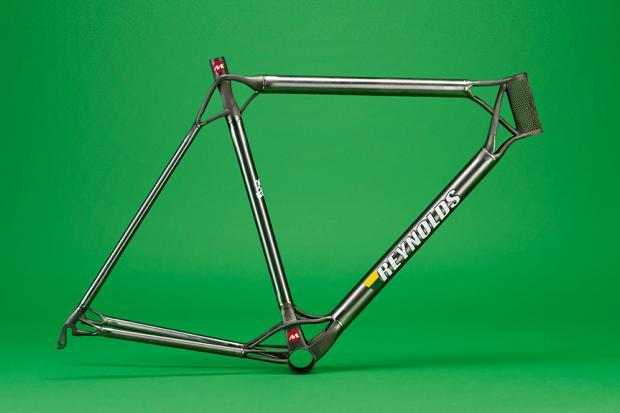
This collection includes free 3D files of bicycle accessories. Numerous 3D models of are perfect for all types of bikes: mountain, city or racing bike . There are no restrictions on bike type, so you can even resize or reshape the 3D files to match the shape of your bike or frame.
In this way, 3D designers offering their creations on the Cults 3D file upload platform compete in ingenuity to make your daily life on a bike easier . For example, you can easily attach your phone to a handlebar, carry water bottles, or attach a GoPro to a bike. Once you get home, there are 3D printed solutions that will allow you to store your bike. You can even stand out by 3D printing custom decorations for your bike, like 3D printed valve caps in the shape of a pizza or a Lego man head!
| 3DNews Technologies and IT market. News cars, motorcycles, vehicles... American startup Avero will print... The most interesting in the reviews 07/14/2020 [14:16], Vladimir Fetisov Silicon Valley-based startup Avero is not known in the cycling world. However, that hasn't stopped him from using his expertise in 3D printing and composite materials to create the "world's first" unibody electric bike. The 3D printed bikes will be sold under the Avero Superstrata brand. Potential buyers will be able to choose between the Superstrata Terra, which is a lightweight analogue of a conventional bike for different riding styles, and the Superstrata Ion, an electric bike with a 250W motor, a 252Wh battery and a range of about 100 km. The frame of the new bikes is made from a single piece of thermoplastic carbon fiber. This means that it is a one-piece piece, rather than a welded construction, as is the case with many standard bicycle frames. 3D printing can be costly and time consuming, but Superstrata CEO Sonny Vu says it creates a bike frame that is strong and durable, as well as a more custom design. It takes about 10 hours to produce one bicycle frame using this method. The manufacturer claims that it can create up to 250,000 unique design combinations. The developers have not yet managed to form all the supply chains of the components necessary for the production of bicycles on a 3D printer. It is expected that Superstrata bikes will soon appear on the Indiegogo crowdfunding platform, where anyone can place a pre-order for the purchase of any model. The Terra is reportedly priced at $2,799 when it goes into production, while the electric version of the Ion will cost $3,999. |


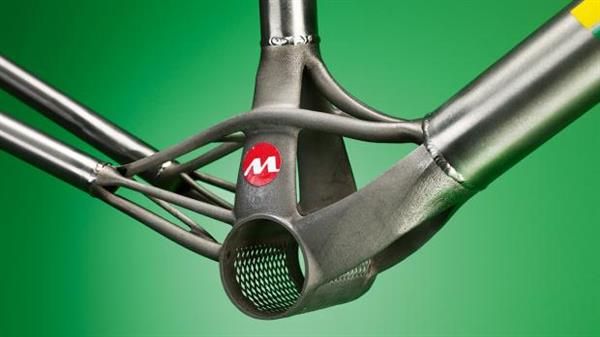 The developers claim that this approach and the materials used make the bike not only shockproof, but also incredibly light. The frame weight of the Terra model is approximately 1.3 kg, while in the case of the Ion version this figure increases to 11 kg.
The developers claim that this approach and the materials used make the bike not only shockproof, but also incredibly light. The frame weight of the Terra model is approximately 1.3 kg, while in the case of the Ion version this figure increases to 11 kg. 